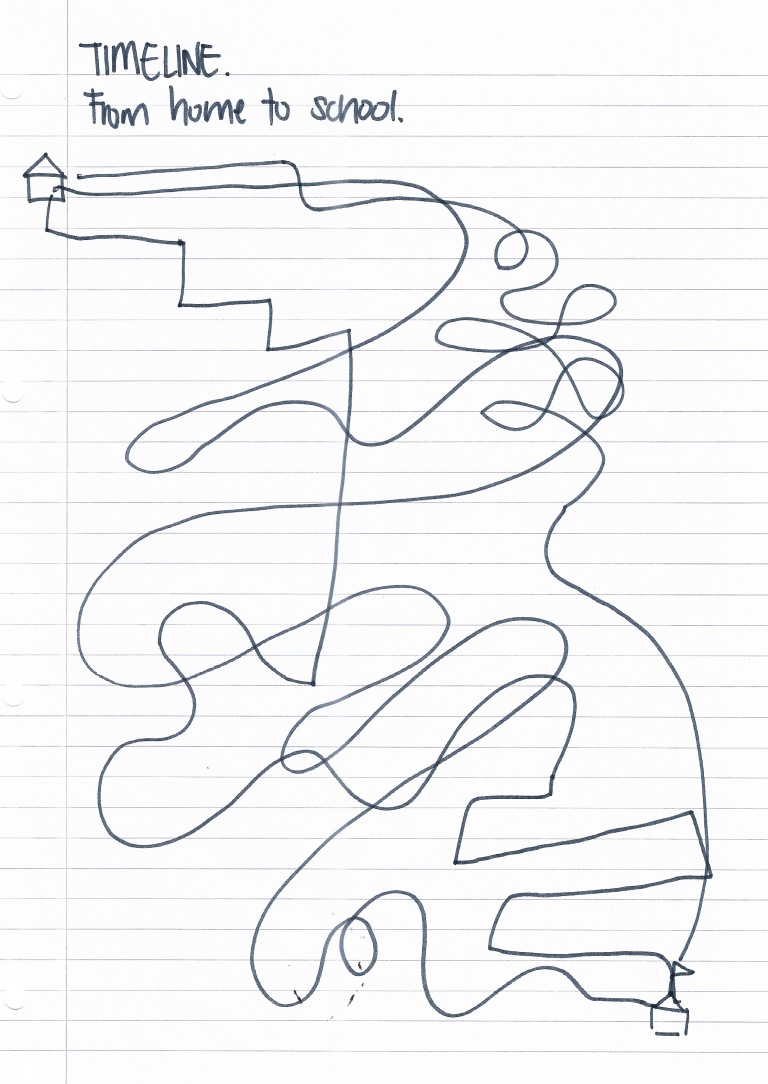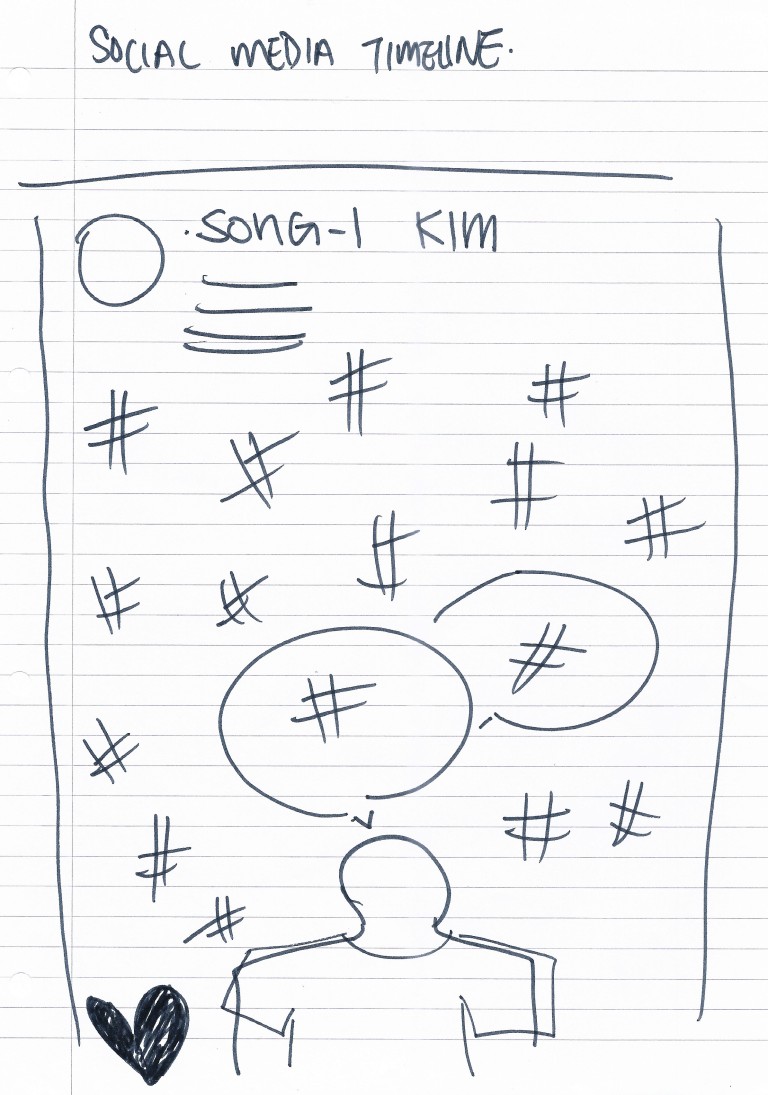In the past, what was perceived as the future was utopia, a geographical distant place. This then changed when the concept of future changes from an idea of a place to time. Time can be measured by observing the weather change, until it evolves to what we know now as the calendar.
We were also introduced about a logical but never thought-of definition of time. Apart from what we commonly know as the past, present and future, there actually is the extended present which comprises the present, immediate past and immediate future. Another term – near future is also introduced as the appearance of objects that we will use in the future. For example, a furniture catalogue can show us how their products can be ideally placed in our homes.
I believe that our daily plan is also part of a timeline, and it helps us to organise our future. Both of these pictures from the mini-exercise during the lecture below shows simple visual timelines. A timeline can be a journey, in this case our journey from home to school. Each straight line represents the route we walked, and the squiggly ones the tube ride to school. Meanwhile, for the second picture shows how timeline exists in social media. Hashtags are widely used these days, to record our event and what other people are doing at the same time. Therefore, these data is shared and kept online and we can access it whenever, wherever.

